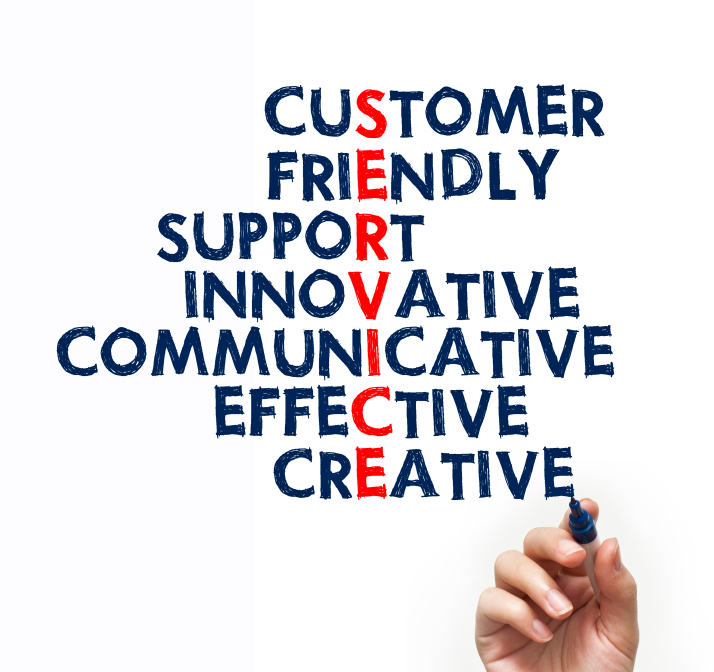Distractions are the bane any customer service employee.
They slow you down, break your concentration, and ultimately lead to service failures. In one silly email exchange, a customer service rep took three emails to answer a simple question that could have been answered in one, simply because she was too distracted to concentrate for just a moment.
Worst case scenario?
The cumulative impact of all that distraction leads to something called Directed Attention Fatigue that has symptoms similar to Attention Deficit Disorder. This can eventually lead to the dreaded burnout.
Let's face it. You're probably distracted right now. Am I right?
The good news is you can do something about it. Here are five simple changes to your normal routine that can help.
Spend Time Outdoors
My wife, Sally, and I spent a lot of time outdoors while vacationing in Ireland last month.
We hiked, biked, and even took a couple of boat rides. Here's an example from a hiking and boating trip we took through the Gap of Dunloe.
Photo credit: Jeff Toister
Over the course of the week we felt increasingly relaxed and clear headed. The "Black Belt" Sudoku puzzles that sometimes take me two hours to complete suddenly started taking less than 15 minutes.
Regular, outdoor exercise is good for the head that way. It's calming, reduces stress, and restores your ability to concentrate. The challenge, as Sally and I discovered when we returned from vacation, is spending regular time outdoors while you're juggling your busy schedule.
Hide Your Cell Phone
It's increasingly common to see customer service employees handling their personal cell phones.
They linger on desks at workstations. They're toted in pockets as retail associates serve customers and restaurant servers assist their guests.
The problem is your cell phone causes distraction that leads to errors. One study found that just having your cell phone present increased errors by more than three times!
Try putting your cell phone away when you're serving customers. As in, out of sight. You'll be more focused. And, as a special bonus, your phone will be much more interesting when you haven't been checking it every five minutes.
Turn Email Off Between Uses
Email is a multitasking nightmare.
The typical person has email up on their computer all the time. Incoming message notifications constantly distract them from other work, or else the waiting program tempts them to check messages every five minutes.
Unfortunately, this leads to less effective communication. People respond less carefully. They miss subtle cues about the sender's real intentions. Their lack of attention inevitably leads to unnecessary back and forth.
A recent study concluded that the average employee wastes 24 percent of their day on useless email.
The way to reduce this problem is to focus on email and then not focus on email. Give messages your full attention and then shut down your email program entirely. Set regular intervals when you'll open up email and check it and then resist the urge to check email outside of these times.
Turn On Your Red Light
Open offices are an open invitation for multitasking.
You're constantly distracted by your neighbors. Colleagues drop by your workstation to chat, ask a question, or just make faces at you. (I apologize to everyone I've done that to.) There's even some speculation that open offices pose a health risk.
A client of mine has a good solution to reduce distractions in their open office.
Each workstation has two small lights above it, one red and one green. A red light means "Please don't interrupt me - I'm busy." A green light means it's okay to disturb that person.
In many ways, the light system is similar to an open or closed office door.
You don't need a light system to create a busy signal in your open office. I've seen other workplaces use simple signs. The key is to send a clear, but polite signal to co-workers that you're immersed in something and don't wished to be disturbed.
Try the Pomodoro Technique
I discovered this simple technique a few years ago, and it works wonders for projects that require a little concentration.
You can watch the short video on the Pomodoro Technique website, but here's a quick summary:
Pick a task that needs your focus.
Set a timer. I use 13 minutes (my lucky number), but the Pomodoro Technique suggests 25.
Block out all distractions that aren't related to that task. This includes hiding your cell phone, shutting down email, and turning on your red light.
Focus on the task without distraction until the timer goes off.
Re-evaluate.
Using this technique, I've often found myself so absorbed in a task that I instantly re-set the timer when it goes off. The end result is the task is completed faster and at a higher quality than if you did it in bits and pieces between other distractions.
Are Your Alert or Distracted?
The theme of all these suggestions is concentration.
It seems so simple, but concentration is a rarity among today's customer service professionals. There's just too many distractions that get in the way.
A true customer service master understands these distractions and takes steps to block or eliminate them so each customer receives full attention.






